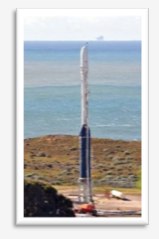It’s 2011 — NASA’s Year of the Solar System! Join us on a cosmic road trip to explore solar system mysteries and share in the thrill of discovery at an exciting new workshop for educators of all grade levels.
NASA’s Discovery and New Frontiers missions are traveling vast distances to find answers to age-old questions. These celestial detectives are revealing how our solar system formed and evolved, doing brilliant science with “way cool” technologies!
• See sights never before seen on Mercury: MESSENGER!
• Get up close to asteroids and comets: Dawn, Stardust-NExT and EPOXI!
• Map the moon’s gravity with twin satellites: GRAIL!
• Peer through Jupiter’s clouds: Juno!
• Cruise to the outer reaches of the solar system: New Horizons!
Hear from mission scientists and engineers, discover engaging activities for grades K-12 classrooms and out-of-school time programs, and receive a resource book loaded with activities and links.
Details
When: Saturday, March 19, 9 a.m. to 2 p.m. at each location listed below.
Where:
• NASA’s Jet Propulsion Laboratory, Pasadena, Calif.
• NASA’s Johnson Space Center, Houston, Texas.
• Jackson Middle School Observatory, Champlin, Minn.
• Johns Hopkins University Applied Physics Laboratory, Laurel, Md.
Cost: $25 (lunch and snacks included).
Special Speakers
- Six years after launch, MESSENGER will enter orbit around Mercury on March 18. We are very fortunate to have Dr. Sean Solomon, MESSENGER’s Principal Investigator, tell us about the mission’s goals, the science findings so far, and the excitement of reaching the orbiting phase of the mission.
- The Dawn mission uses ion propulsion to visit the two largest objects in the asteroid belt. Launched in September 2007, Dawn will arrive at asteroid Vesta this July for a year-long orbit. Dawn’s Chief Engineer, Dr. Marc Rayman, will share why this mission is so unique and what scientists hope to learn.
- Juno’s quest is to aid in the understanding of the formation and evolution of Jupiter, which will help us comprehend the origin of the entire solar system. Juno will launch this August. Dr. Ravit Helled from the gravity team tells us how Juno will reveal “the giant planet story.”
Watch the speakers on the free webinar if you can’t be at one of the sites.
 The Moderate Resolution Imaging Spectroradiometer, or MODIS, on NASA’s Aqua satellite and the MODIS sensor on NASA’s Terra satellite took photos of Japan’s earthquake and tsunami. Images were made with infrared and visible light to highlight the presence of water and other features on the ground.
The Moderate Resolution Imaging Spectroradiometer, or MODIS, on NASA’s Aqua satellite and the MODIS sensor on NASA’s Terra satellite took photos of Japan’s earthquake and tsunami. Images were made with infrared and visible light to highlight the presence of water and other features on the ground.
 Almost 200 people from 15 countries have visited the International Space Station, but the orbiting complex has so far only ever had human crew members – until now.
Almost 200 people from 15 countries have visited the International Space Station, but the orbiting complex has so far only ever had human crew members – until now. 
 Glory is NASA’s newest member of a fleet of Earth-observing satellites known as the Afternoon Constellation, or “A-Train.” The satellites together offer a more cohesive and detailed picture of the Earth’s biosphere and climate. Glory will measure the affects of particles suspended in the atmosphere or aerosols. Aerosols can absorb sunlight, or they can reflect the sun’s energy back into space.
Glory is NASA’s newest member of a fleet of Earth-observing satellites known as the Afternoon Constellation, or “A-Train.” The satellites together offer a more cohesive and detailed picture of the Earth’s biosphere and climate. Glory will measure the affects of particles suspended in the atmosphere or aerosols. Aerosols can absorb sunlight, or they can reflect the sun’s energy back into space.  Next month, MESSENGER will execute a 15-minute maneuver. placing the spacecraft into orbit around Mercury. It will be the first spacecraft ever to orbit the solar system’s innermost planet. Check out the MESSENGER module
Next month, MESSENGER will execute a 15-minute maneuver. placing the spacecraft into orbit around Mercury. It will be the first spacecraft ever to orbit the solar system’s innermost planet. Check out the MESSENGER module 